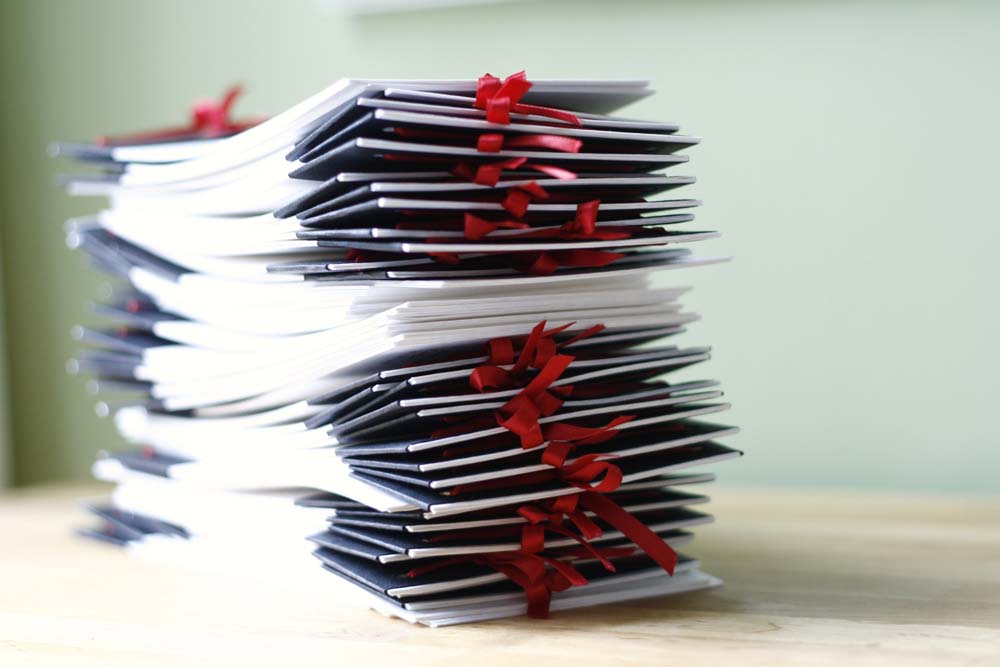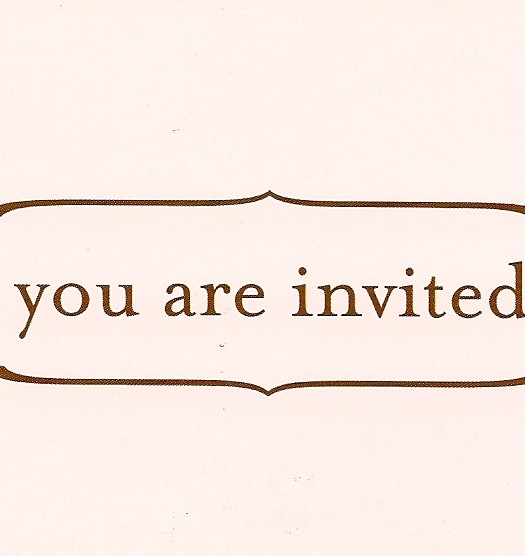As the host of an event it is generally your responsibility to invite your desired guests. Here are a few general rules of invitation etiquette from The Invitation Shop to ensure no one misses out on your fabulous celebration.
STYLE:
Your invitation defines your style and the tone of the party. If it is a formal affair, your invitation should convey that with the style of invitation chosen, the paper, layers, ribbons, formal fonts or hand calligraphy on envelopes, the reason for the party (wedding, retirement, holiday party), the time of day or evening and location of the party all give guests clues as to how they should dress and is their first glimpse of your event.
WORDING:
Don’t get wordy. Only the party details, reason for the party (like a birthday, anniversary), date, time, location, host and rsvp info belong on the invitation. Do not include directions, accommodations or where you’re registered. Those details, if you must include them, should be on a separate insert card.
REGISTRY:
In the case of registry, the only place to list this is on a wedding website and/or for baby showers or other events that use registries, give the information to the hostess, your mother, sisters, best friends, so they can relay the information if asked.
DRESS CODE:
Your invitations are a clue as to what type of party you have planned. An ultra-fancy formal invitation would require a different type of attire than a birthday backyard barbecue. When in doubt, guests can ask when they reply to the invitation. While it is not proper to put this information on your invitation, you could include it in a small font as the last line on an invitation, include the information on your response card or if for a wedding, on your wedding website. An exception would be for a costume Halloween party when the dress code is party of the theme of the party or an ugly sweater holiday party.
RSVP:
Set your RSVP date for 3-4 weeks after your guests would receive formal invitations or if your event needs a headcount for a caterer, restaurant or bartender for example. For casual parties, allow yourself enough time to purchase party goods in the quantities required for your final headcount.
RSVP CARDS:
Remember to put a stamp on them. Typically, the envelopes are addressed to come back to the host, but in the case of a wedding, if the bride is keeping track of the replies instead of her parents, her name and address can be on the response envelopes.
WHO’S INVITED:
Even if no children are invited, do not put that on your invitations. The place to state who is invited to the party is who the invitation envelope is addressed to. Make it clear on the envelopes who is invited to the party by writing each guest’s name on the envelopes: Mr. and Mrs. John Smith and Miss Jessica Smith would invite their daughter too; Mr. Jason Clark and Guest, would indicate that Mr. Clark can bring a guest; Ms Carrie Jones would indicate she is the only person invited, no plus one guest is invited. If you have guests that reply that they are bringing more people than you invited, or their children, politely let them know that you only have room for the number of guests invited or that it is adult party and you hope they will still be able to attend without their children or without their additional plus ones or twos.
ORDER EXTRA:
It is expensive and time consuming to order more invitations after the fact. If your event is a wedding, formal occasion or a business event, you will want to order at least 25 extra invitations. Even for casual parties, order extra. You might need to resend an invitation, you forgot someone that should have been on your guest list or you have a “B-list” of guests, and you will also want keepsakes for yourself.
POSTAGE:
Don’t buy postage until you weigh one of your invitations. If your invitations are anything more than the invitation and an envelope or if they are square or an unusual size, take one to the post office complete with all the inserts and have them weighed to ensure you use the correct postage. For fancy, formal invitations or wedding invitations that could be ruined by the post office’s automatic processing equipment, ask about getting your invitations hand cancelled with hand stamping that shows your envelopes have been processed by hand.
WHEN TO MAIL:
A general rule of thumb is to mail wedding or formal event invitations 6-8 weeks in advance. Casual invitations for kids, simple birthday party, casual dinner party, can be mailed 2-3 weeks ahead of the party date. If you want to give your guests extra notice of your party or the party date is also around a holiday or yearly special event like Valentine’s Day, Mother’s Day, you can send save the date cards to guests several months before your event and indicate that an invitation is to follow.
THANK YOU NOTES:
Order thank you notes at the same time as invitations. For wedding gifts received early, do not use stationery printed with your married name before the ceremony. You may want to order two sets of thank you notes, one with your maiden name for bridal shower gifts and early wedding gifts and a set as husband and wife with your married name.
Source: http://www.theinvitationshop.com/invitation-etiquette.html


